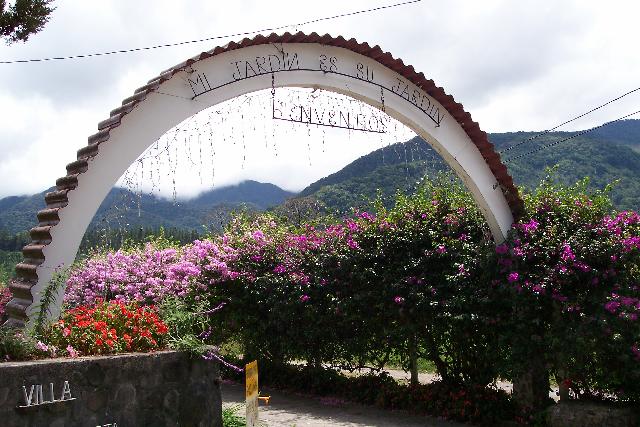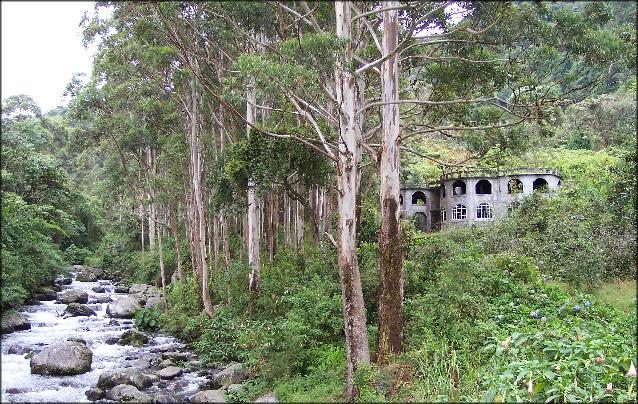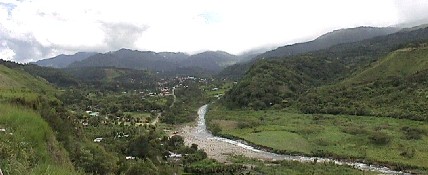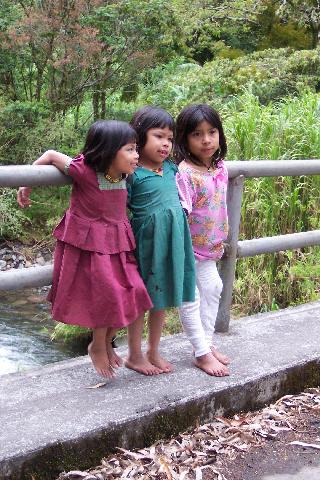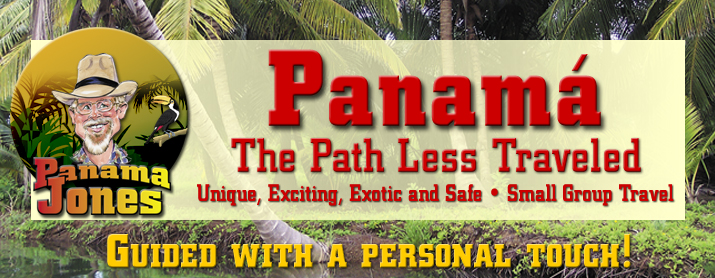In the highland region of Panama's Westernmost Province of Chiriqui is Boquete the placid and wonderful "Valley of the Flowers and Eternal Spring". Boquete borders to the north with the town of Bocas del Toro and Chiriqui Grande, located in the Bocas del Toro Province. Its neighbor to the east the Gualaca district, to the south are Dolega and David, and west of its border are Bugaba and Dolega. This cool and fertile valley is comprised of the presents of Bajo Boquete, Caldera and Palmira. Boquete has a surface of 514 kms, with a population of approximately 15,500 and an elevation of 1,600 meters above sea level. The altitude oscillates between 800 to 3,000 meters in the northern region, and between 300 to 800 meters in the southern region. The area has an average temperature of 20°C throughout the year.
The distance from Panama City is 480 Kms, and from the city of David is about 40 kms, which represents about a 30-minute drive by car. By plane it takes about 50 minutes from Panama City's Paitilla Airport to David with daily flights in the morning and the afternoon. The bus transportation to David has two options: the express bus, which takes 5 1/2 hours or the regular, bus 6 1/2 hours.
The Caldera River, whose headwaters are in the Central mountain range at 2,900 meters above sea level, is the main river of the District. It runs through the town in a north to south direction; its waters flow into the Chiriqui River and into the currents of the India Vieja and the Valles rivers, and also into Jaramillo, Aserno and Grande streams.
In Boquete, the highlands are predominantly of volcanic origin and on the lower elevations they are of colluvial and sedimentary origin. Its higher peaks are Cerro Palo Alto, Pianista, India Vieja and Estrella.
The cultivation of flowers, coffee, citrus fruits, strawberries and a variety of vegetables, are the main source of work for the people of Boquete. As a coffee-producing area, Boquete's grain quality is the best in the Republic.
Boquete was founded on April 11, 1911. Its first settlers were from other districts, as well as Swiss, Yugoslavs, Swedish, Germans and North American immigrants. It is for this reason than their farms and homes maintain remnants of architectural styles proper to those countries.
The peculiarities of the area are winds from the North and the "bajareque", which consist of light drizzle accompanied by a cool breeze.
On its steep mountains lives a group of indigenous people called, "Gnobe-Bugle", or better known as Guaymies, who work in the coffee plantations and farms. Colorful and beautiful chaquira (bead necklace) handicrafts, basketweaving works, the typical "chacara" (woven bags), and the "Original" or "Nahua", an aboriginal dress of the Indian women of the region. From Boquete different tours can be organized to first class tourist attractions. If vulcanology is the interest of the visitor then climbing the "Volcan Baru" is a thrilling adventure. As you climb to the highest point in the Republic of Panama you will see the fascinating Mountain Rainforest, Cloudforest and a panoramic view of the Pacific Ocean. Birdwatching is one of the main attractions of Boquete. The Quetzals, considered bird of great beauty, may be observed in this paradise where they nest. More than forty-three species have been recorded.
Boquete's flora is abundant and varied, qualities that have been associated with its distinguished name. Lilies, statices, hibiscus, hortenses, anthuriums, roses, St. Josephs, carnations, sunflowers and orquids have resulted in a polychromy of uncomparable beauty. This has motivated its residents to celebrate the Flower and Coffee Festival in the month of January, and the Orquid Festival in the month of April.
The person that enjoys panoramic views must start one's visit from the entrance of the town at the lookout of "La Virgen de Ia Gruta" from which you can observe Boquete ant the Caldera river. Afterwards, the enjoyment of diverse and varied attractions, such as the Lescure Gardens, Mi Jardin es su Jardin (My garden is your garden), owned by the Gonzalez family and is known for its beauty and harmony. The hills and mountains that invite one to walks and unforgetable strolls are Cerro Pata de Macho, Cerro La Artilleria, the India Vieja and the Pianista. Inside this exuberant vegetation there are trails for nature lovers and ecotourists, such as the small El Explorador Park, the Nevera in Bajo Boquete and the one that takes you to the Caldera river, Fogones, Mirador, Potrero Mulato, Benjamin, Pata de Macho, Hato Volcan (going towards the top the Volcan Baru), Jaramillo Arriba, Alto y Bajo Lino, Quiel and Bajo Mono (with its marvelous waterfall of San Ramon and hydroelectric plant La Estrella, the petrogliphs of Caldera towards Cerro Punta, and the magical trail of Los Quetzales. If you have any luck maybe you can observe the majesty and multicolor of this beautiful bird.
From here you can also start a tour the rapids of Chiriqui and Chiriqui Viejo rivers; the onion and tomato farms, as well as also the factory of Conservas de Antano (with its jams and marmalades) and the Lerida and Arco Iris farms. By nightfall you cannot escape a visit to the Church of San Juan Bautista, the Central Park Domingo Medica, and finish wrap up the day by having a delicious cup of hot chocolate in town.
Boquete
Copyright 2013: Panamacanal.com | Panama Canal Travel | All rights reserved.
Since
1992
 | ||||||
 | ||||||
Professional
Bilingual Guides
